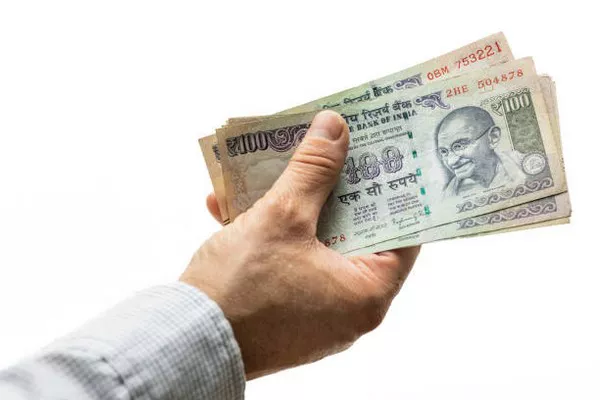The Indian rupee, with its distinctive journey in the global currency landscape, is subject to a myriad of factors that intricately shape its valuation. This article embarks on an exploration of the key drivers influencing the Indian rupee, delving into economic, geopolitical, and market dynamics that collectively contribute to its fluctuations. Understanding these factors is essential for investors, policymakers, and anyone seeking insights into the forces steering the trajectory of the Indian rupee.
1. Economic Fundamentals and Trade Balance
GDP Growth and Economic Health:
One of the primary determinants of the Indian rupee’s strength is the country’s economic health, as reflected in its Gross Domestic Product (GDP) growth. Robust GDP growth signals a vibrant and expanding economy, typically bolstering confidence in the rupee. Conversely, economic contractions or sluggish growth can exert downward pressure on the currency.
Trade Balance and Current Account Deficit:
India’s trade balance, the difference between exports and imports, significantly influences the rupee’s valuation. A trade surplus, where exports exceed imports, can contribute to rupee appreciation, while a trade deficit may lead to depreciation. The current account deficit, encompassing trade, services, and remittances, is closely monitored as persistent deficits can impact the rupee’s stability.
2. Interest Rates and Monetary Policy
Interest Rate Differentials:
Interest rates play a pivotal role in shaping the Indian rupee’s attractiveness to investors. Higher interest rates in India relative to other economies can draw foreign capital seeking better returns. The Reserve Bank of India (RBI)’s monetary policy decisions, including interest rate adjustments, influence interest rate differentials and, consequently, the rupee’s valuation.
Inflation Rates and Real Interest Rates:
Inflation rates impact the rupee’s real interest rates, calculated by subtracting inflation from nominal interest rates. Positive real interest rates make Indian assets more appealing to investors, potentially leading to capital inflows and rupee appreciation. Managing inflation becomes crucial for the RBI to maintain a conducive environment for the rupee.
3. Geopolitical Factors and Global Sentiment
Global Risk Appetite:
The Indian rupee’s fate is intertwined with global risk sentiment. In risk-on environments, where investors embrace higher-risk assets, the rupee may appreciate as foreign funds flow into Indian markets. Conversely, during risk-off periods marked by global uncertainties, the rupee may face depreciation as investors seek safer assets.
Geopolitical Developments:
Geopolitical events can introduce volatility to currency markets. Tensions, conflicts, or geopolitical shifts impact investor confidence, influencing capital flows and the rupee’s valuation. A stable geopolitical environment enhances the rupee’s appeal as a reliable investment.
4. Foreign Direct Investment (FDI) and Portfolio Flows
FDI and Capital Inflows:
Foreign Direct Investment (FDI) contributes to a sustainable influx of foreign capital into India, positively impacting the rupee. Investments in infrastructure, manufacturing, and services strengthen economic fundamentals, fostering confidence in the currency. Policies encouraging FDI play a role in shaping the rupee’s attractiveness to global investors.
Portfolio Flows and Capital Markets:
The Indian rupee is susceptible to portfolio flows, including foreign institutional investments in equities and debt. Fluctuations in capital market investments, influenced by global and domestic factors, contribute to short-term volatility in the rupee’s valuation. Regulatory frameworks and market conditions influence investor sentiment.
5. External Debt and Reserves
External Debt Levels:
India’s external debt levels impact the rupee’s vulnerability to currency movements. High external debt, particularly in foreign currencies, can amplify depreciation risks. Maintaining a manageable external debt profile is crucial for mitigating pressures on the rupee.
Foreign Exchange Reserves:
The RBI’s foreign exchange reserves serve as a buffer against external shocks and speculative attacks on the rupee. Healthy reserves instill confidence in the rupee’s stability. Prudent management of reserves allows the RBI to intervene in currency markets when necessary, influencing the rupee’s direction.
6. Oil Prices and Current Account Dynamics
Oil Price Movements:
India’s reliance on oil imports exposes the rupee to fluctuations in global oil prices. Higher oil prices contribute to an elevated import bill, potentially widening the current account deficit and impacting the rupee’s valuation. Hedging strategies and energy policies play a role in managing this exposure.
Current Account Dynamics:
The current account, comprising trade and non-trade transactions, is pivotal for the rupee’s stability. A sustainable current account deficit is manageable, but persistent imbalances may lead to increased external borrowing and currency depreciation. Policies addressing the current account contribute to rupee resilience.
7. Structural Reforms and Government Policies
Reform Initiatives:
Structural reforms and policy initiatives by the Indian government can have lasting effects on the rupee. Measures aimed at enhancing economic competitiveness, ease of doing business, and fiscal discipline contribute to a favorable environment for the rupee. Investors often respond positively to initiatives fostering economic growth.
Fiscal Deficit Management:
The management of fiscal deficits is integral to the rupee’s stability. Prudent fiscal policies that balance government expenditures and revenues contribute to investor confidence. Escalating fiscal deficits may strain the rupee by raising concerns about sustainability.
8. Technological Advancements and Digital Transformation
Digital Payments and Fintech Innovations:
Technological advancements, particularly in the realm of digital payments and fintech innovations, shape the economic landscape. The government’s push for a digital economy influences financial transactions and remittances, impacting currency circulation. Evolving payment systems contribute to the efficiency of financial markets.
Cryptocurrency Dynamics:
The emergence and dynamics of cryptocurrencies introduce a layer of complexity to currency markets. While cryptocurrencies operate independently of traditional currencies, their interactions with fiat currencies, including the rupee, can influence market sentiments and capital flows.
See Also: Indian Rupee (INR) Currency: History, Symbol, Codes & Denominations
Conclusion
In the intricate tapestry of global finance, the Indian rupee’s journey is guided by a symphony of factors ranging from economic fundamentals to geopolitical dynamics. Investors and policymakers alike navigate this landscape, deciphering the cues embedded in trade balances, interest rate differentials, and external debt levels. As the Indian economy continues to evolve, staying attuned to the multifaceted influences on the rupee is paramount for making informed decisions in the dynamic world of currency markets.


